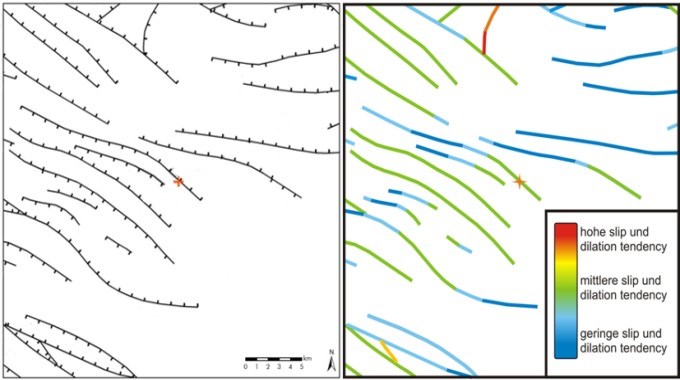Structural and Stress Field Analysis
Fractures and faults can represent significant pathways of geothermal fluids. The geothermal potential of fault zones depends strongly on their position within the current stress field. Thus, an analysis of the structural and stress field is an important factor with respect to the exploration risk for geothermal projects.

Typical input data for the calculation of the stress field are borehole logs of existing wells, geophysical borehole logs (e.g., Borehole Televiewer), hydraulic test data (leak-off tests) and regional maps (e.g., World Stress Map Project). Based on this information, the slip and dilation tendency can be calculated. Faults with a high tendency indicate an increased geothermal prospectivity.
Along with the interpretation of the stress field, conclusions for its geothermal potential can be drawn from the kinematic evolution of a fault system. Frequently activated faults have been less likely „healed“ by recrystallisation. Common methods of the kinematic reconstruction are fault throw analysis and horizon flattening.
GTN offers following services of the structural and stress field analysis:
- Calculation of the current stress field
- Position of known faults within the stress field
- Inquiry of relevant data
- Planning of hydraulic tests and geophysical borehole logs for determination of the stress field
- Reconstruction of the kinematic evolution of fault systems
Faults oriented favourably in the present stress field are more likely to be water-bearing.